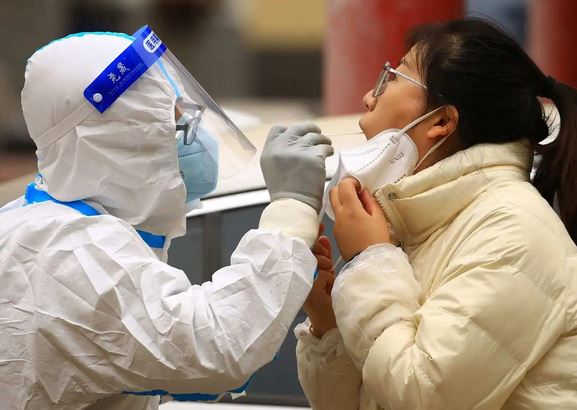The dollar edged higher on Monday as protests in China against the government’s COVID-19 policy pushed investors away from riskier assets and sent the Chinese yuan down to more than a two-week low against the safe-haven dollar.
Protest against lockdown
Protests erupted across China and spread to several cities after an apartment fire killed 10 people in Urumqi in the far west of the country. Hundreds of demonstrators and police clashed in Shanghai on Sunday night.

Investors have been worried about how the government in Beijing will respond to a wave of civil disobedience as the number of COVID cases rises.
“We’re really looking at the government’s reaction to what’s going on … the government’s reaction is so unpredictable,” said Chris Weston, head of research at Pepperstone.
Yuan’s decline
The offshore yuan fell to more than a two-week low in Asian trading and was about 0.4% lower at 7.2242 per dollar.
The Australian dollar, often used as a liquid proxy for the yuan, slipped more than 1% to $0.6681. The New Zealand dollar fell 0.72% to $0.6202.
Severe restrictions imposed by China in response to COVID have caused serious damage to the country’s economy, and the authorities have taken various measures to revive economic growth. On Friday, the People’s Bank of China (PBOC), the country’s central bank, said it would cut the reserve requirement ratio (RRR) for banks by 25 basis points (bps); This decision will come into force on 5 December.
PBoC’s RRR cut
“If the RRR cut is the only monetary policy tool that the People’s Bank of China is going to implement, it may not lead to a significant increase in bank lending,” said Iris Pang, chief economist for Greater China at ING.
“Companies are currently facing a decline in retail sales due to an increase in COVID cases and falling home prices due to unfinished projects.”
The euro fell 0.5% to $1.0350, while the pound sterling slipped 0.26% to $1.2057.
Recent developments in China have halted the fall of the US dollar, which has been depreciating over the past few weeks in hopes that the Federal Reserve will soon slow down its pace of rate hikes. This view was supported by the minutes of the November meeting released last week.
Against a basket of currencies, the US dollar index rose 0.07% to 106.41, off its recent three-month low of 105.30.
Fedspeak on Wednesday
Fed Chairman Jerome Powell is due to give a talk on the outlook for the US economy and the labor market at a Brookings Institution event on Wednesday that could provide more insight into the outlook for US monetary policy.

Market expectations of a less hawkish Fed helped the Japanese yen to strengthen, said Mo Siong Sim, currency strategist at the Bank of Singapore.
The yen rose about 0.5% to 138.40 per dollar. “The market thinks the Fed is moving towards a 50 basis point rate hike and may pause next year, which could cap US Treasury yields. And the dollar/yen is probably lining up for that idea.”


